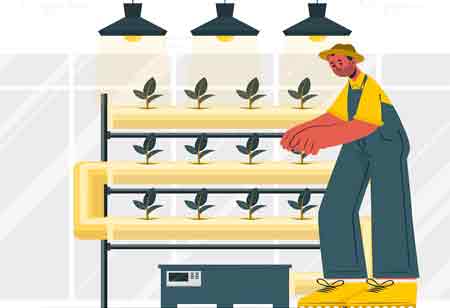Thank you for Subscribing to Agri Business Review Weekly Brief
Key Insights and Emerging Trends in Agricultural Automation
The future of farming is bright with the adoption of automation and smart technologies, driving greater efficiency, sustainability, and improved use of labor resources.

By
Agri Business Review | Wednesday, October 22, 2025
Stay ahead of the industry with exclusive feature stories on the top companies, expert insights and the latest news delivered straight to your inbox. Subscribe today.
Fremont, CA: In recent years, the agricultural sector has experienced a significant transformation driven by rapid technological advancements. What was once a futuristic concept—automation in agriculture—has evolved into a vital aspect of modern farming, enhancing efficiency, boosting productivity, and promoting sustainability.
The Rise of Smart Farming: Smart farming, powered by the Internet of Things (IoT), is paving the way for a new agricultural era. Field sensors provide real-time data on soil moisture, temperature, and nutrient levels, allowing farmers to make informed decisions. These insights enable precision agriculture, where water, fertilizers, and pesticides are applied precisely, minimizing waste and environmental impact.
As IoT technology becomes more affordable, its adoption among farmers of all sizes is expected to increase.
Autonomous Machinery: The use of autonomous machinery is transforming traditional farming practices. Tractors, harvesters, and drones equipped with advanced GPS and AI technologies can perform tasks without human intervention. Autonomous tractors, for instance, can plow fields, plant seeds, and harvest crops, operating efficiently even in challenging weather conditions. Drones are increasingly used for crop monitoring, surveying large areas quickly, and identifying pests and diseases early. The labor shortage in agriculture, exacerbated by various factors, including an aging workforce, has further accelerated the adoption of these technologies.
Robotics in Agriculture: Robotics is another frontier in agricultural automation. Robotic systems are being developed for various tasks, including planting, weeding, and harvesting. These robots enhance productivity and reduce manual labor. For example, specialized robots can identify and remove weeds without damaging crops, significantly reducing the need for chemical herbicides. Farmers can expect even more sophisticated solutions that improve efficiency and lower costs as robotics technology advances.
Data-Driven Decision-Making: Integrating big data analytics into agriculture provides farmers with valuable insights that were previously unattainable. By analyzing large datasets collected from various sources, including satellite imagery and weather forecasts, farmers can make better decisions regarding planting schedules, crop rotations, and resource allocation. Data-driven agriculture helps maximize yields while minimizing risks, leading to more sustainable practices.
Sustainability and Environmental Impact: Automation in agriculture is closely tied to sustainability efforts. Automated systems contribute to environmentally friendly farming practices by optimizing resource use and reducing waste. Technologies such as precision irrigation and nutrient management enhance crop yields and help conserve water and protect ecosystems.
Challenges and Considerations: Despite its many benefits, the transition to automation is challenging. Initial investment costs for advanced technologies can be prohibitive for small-scale farmers. Additionally, a learning curve is associated with new systems, requiring training and support. Ensuring data privacy and security in a tech-driven environment is also a concern that must be addressed.
The trends in automation in agriculture are shifting the industry towards a more efficient and sustainable future. As technologies continue to evolve, collaboration between farmers, technology developers, and policymakers will be essential to maximize the potential of automation while minimizing its challenges.





